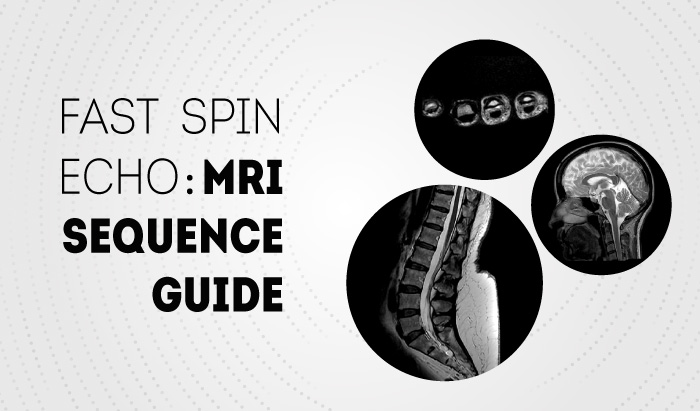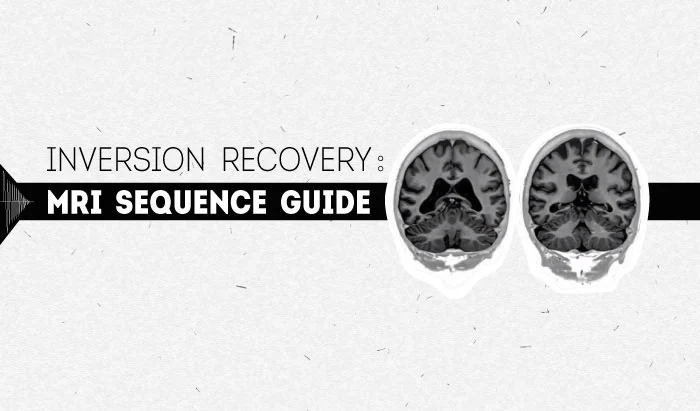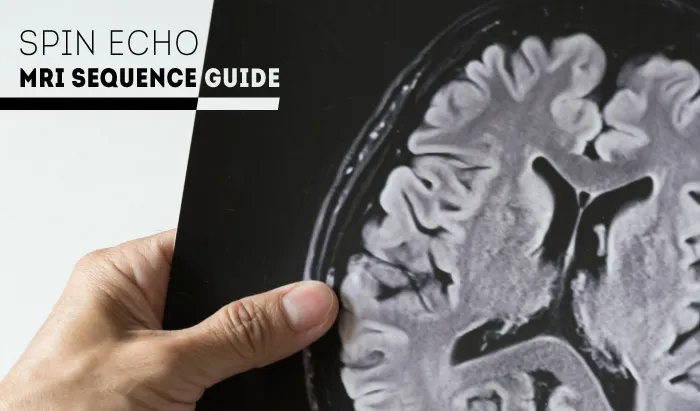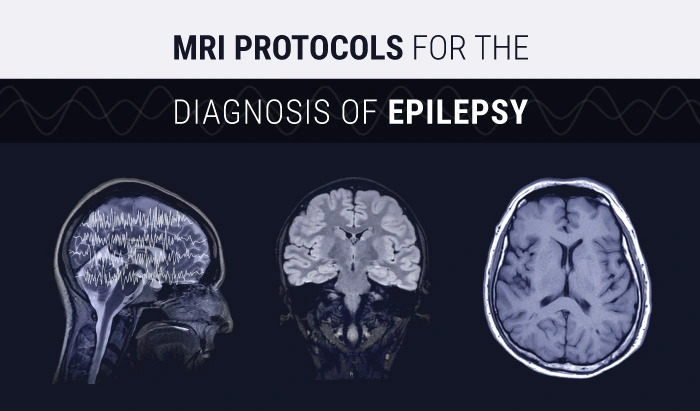Fast Spin Echo: MRI Sequence Guide

Fast Spin Echo: MRI Sequence Guide – FSE MRI


If you read our previous guide to the spin echo MRI sequence, you have the foundation you need to move on to the fast spin echo (FSE) MRI sequence. Also called the turbo spin echo, the fast spin echo is a variation of spin echo that was created to allow for faster scanning. Today, FSE is the most widely used of all MRI sequences.
This guide is intended for radiologic technologists and will cover the FSE chronogram, important parameters, advantages and limitations of the sequence, as well as its usage. The guide also provides some examples of what an MRI image acquired with FSE looks like.
Fast Spin Echo Chronogram
Like the spin echo (SE) sequence, the chronogram for fast spin echo is characterized by an initial 90° pulse. If we carry out a 180° pulse at TE/2 in the SE sequence and then read the signal, we will collect several signals, each separated by a 180° pulse. And also like the SE sequence, the effect of these 180° pulses is to compensate dephasings due to local magnetic field inhomogeneities.

In this time diagram of the fast spin echo, we can see the shape of slice selection gradients that are bipolar for the 90° pulse in order to compensate dephasings and are not bipolar at the moment the 180° pulse is applied because of the inversion of dephasings induced by this pulse.
The frequency gradient is composed of one positive lobe before the 180° pulse and two positive lobes after the 180° pulse at the moment when the signal is read.
Using the left-hand scroll bar, we can visualize movements inside the Fourier space during a single TR to verify that several rows of the k-space are filled at each TR. Because several rows of k-space are filled at each TR, acquisition times for fast spin echo MRI sequences are shorter than those of the SE sequence. (This is why FSE is faster than SE.)
The number of rows of the k-space filled at each TR is a parameter that can be set: echo train or turbo factor.
Important Parameters for Fast Spin Echo
Again, like the SE sequence, the parameters that are most important in determining the contrast and weighting of the fast spin echo sequence are TR and TE.
With FSE, however, TE is the effective TE, or the TE that will encode the central rows of the Fourier space. In fact, all echoes participate in image creation. The echoes that fill the central rows will provide contrast information.
- TE determines the T2 effect of the sequence:
- A short TE limits the T2 effect
- A long TE causes a substantial T2 effect in the sequence
- TR determines the T1 effect of the sequence:
- A short TR causes a substantial T1 effect in the sequence
- A long TR limits the T1 effect
Inter-echo Space
It is important to take the inter-echo space into consideration for this MRI sequence. This parameter determines the weighting difference of each echo and also affects the time of the last echo (TEmax). The time of this echo determines the number of slices allowed for a single acquisition.
Echo Train or Turbo Factor
Another important parameter for the fast spin echo is, of course, the echo train or turbo factor. This parameter determines the number of rows of k-space that will be filled at each TR. It will also affect T2 weighting of the image, the blurring effect, and the signal-to-noise ratio.
Other parameters affect the signal-to-noise ratio and/or spatial resolution, such as bandwidth (when it is accessible), the phase matrix, the frequency matrix, FOV, and slice thickness.
This table contains the parameters specific to the fast spin echo sequence along with the effects on contrast, signal-to-noise ratio, and number of slices allowed per acquisition.

Advantages and Disadvantages of Fast Spin Echo
- Relatively insensitive to local magnetic field inhomogeneities
- Reduction of acquisition time
- Less sensitive to pulse-related artifacts than the true spin echo sequence
- Less sensitive to magnetic susceptibility
- Not well optimized for T1 weighting because it is involved in later echo images
- Image contrast depends on effective TE, since all echoes participate in creation of the image although their TEs are different. Effective TE (modifiable parameter) will fill the central rows of the Fourier space and thus contribute to image contrast
- An abrupt signal variation between 2 consecutive rows of the Fourier space generates errors leading to a spatial encoding fault, resulting in blurring
- Poor management of the inter-echo space, the echo train, or TEeff leads to a loss of image quality due to blurring
Clinical Applications for Fast Spin Echo
The fast spin echo sequence provides considerable programming flexibility in terms of weighting and is fairly fast. In addition, since this sequence is less sensitive to magnetic susceptibility, it is used when metals are present, such as in osteo-articular imaging with presence of prosthesis.
Examples
Below are several examples of images obtained with a true fast spin echo MRI sequence. These are all T2 weighted, as T1 sequences are not often performed using TSE or FSE MRI sequences.
Remember that a T2 contrast has a very specific appearance based on the tissue’s T2 time: fluid is bright and fat is darker.







